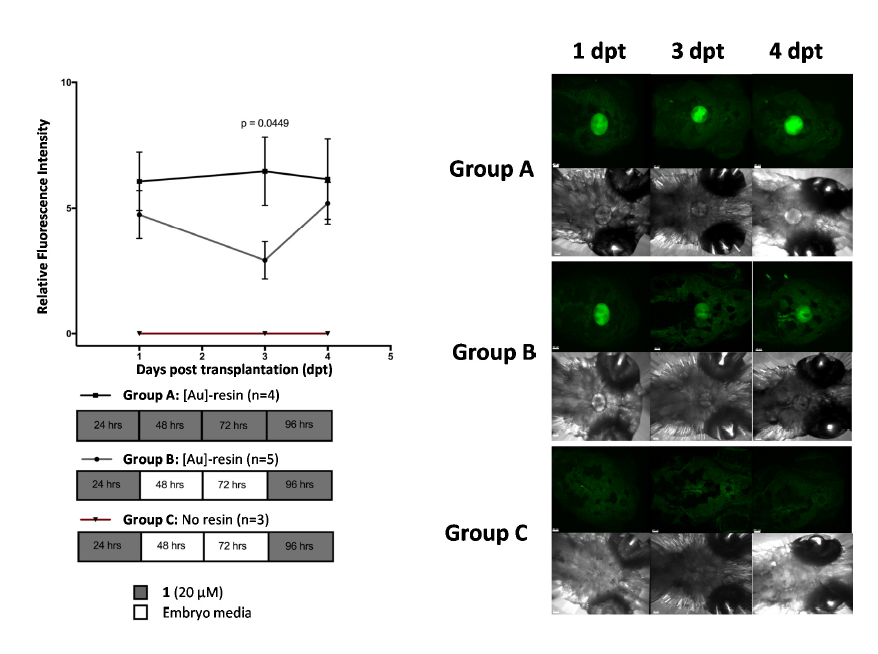Fig. S11
Time-course analysis and representative images of the bioorthogonal gold-mediated release of green fluorescent rhodamine 110 from precursor 1 in the brain of a zebrafish. Study of fluorescence intensity between the persistent (group A, in black) vs the intermittent (group B, in grey) treatment at 3 dpt shows statistical significance. This study further corroborated previous observations in cancer cell culture. Persistent treatment with reagent 1 (group A), enabled the local generation of dye 2 in the brain and the sustenance of high levels of fluorescence over the life of the study. In contrast, after interrupting the treatment for 2 d (group B), local levels of fluorescence decreased, likely due to the metabolization / elimination of compound 2. 24 h after resuming the treatment (3 to 4 dpt), high intensity of local fluorescence in the area of the [Au]-resin was restored. Importantly, treatment with reagent 1 in the absence of [Au]- resin did not change fluorescence levels in the brain over the background control.

